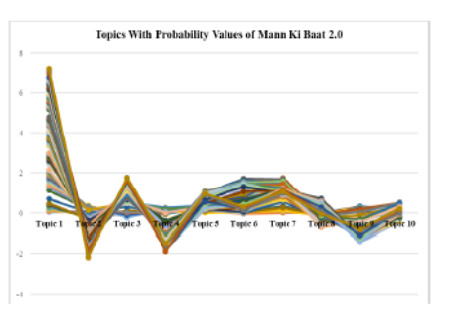


Indian Journal of Science and Technology
Year: 2022, Volume: 15, Issue: 37, Pages: 1859-1867
Original Article
Kirti Makwana1*, Amit P Ganatra2
1Assistant Professor, Faculty of Management Studies (FMS), Indukaka Ipcowala Institute of Management (I2IM), Charotar University of Science and Technology (CHARUSAT), Changa, Gujarat, India
2Vice Chancellor (Provost), Parul University, Vadodara, Gujarat, India
*Correspondigng Author
Email: [email protected]
Received Date:20 April 2022, Accepted Date:18 August 2022, Published Date:26 September 2022
Background: The present research gives insights about Textual Data analytics of “Mann Ki Baat” – a monthly radio programme hosted by Shri. Narendra Modi, the Prime Minister of India on All India Radio. Using techniques of textual data analytics, an analytical framework is designed in this research paper. Methods: The outline is applied to the corpus of twelve (12) episodes of Mann Ki Baat 2.0 (March 2020 – February 2021, after nationwide a lockdown in India) collected from PMIndia’s official website and was studied in detail. Recurrently spoken words, diversity of topics covered, Topics Correlations, Sentiment Analysis, and Hierarchical Clustering were determined and analyzed. Further, word clouds for each episode were also generated. Findings: The research is a new approach of an application under the traditional “topic modeling” techniques on Mann Ki Baat 2.0. Novelty and applications: Additionally, this research is an attempt to extract the themes using statistical modeling deliberated in the popular radio programme – Mann Ki Baat 2.0.
Keywords: Textual Data Analytics Topics Correlations; Sentiment Analysis; Hierarchical Clustering; Word Clouds; Mann Ki Baat 2.0
© 2022 Makwana & Ganatra. This is an open-access article distributed under the terms of the Creative Commons Attribution License, which permits unrestricted use, distribution, and reproduction in any medium, provided the original author and source are credited.
Published By Indian Society for Education and Environment (iSee)
Subscribe now for latest articles and news.